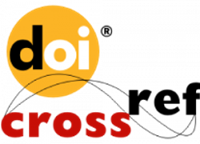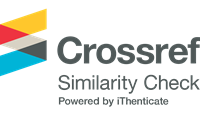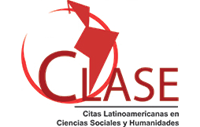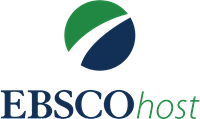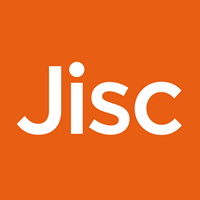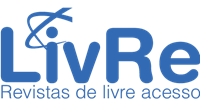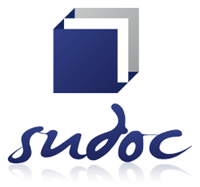Populated with lines, a research dances in education
Abstract
The lines of writing that unroll and mesh here are unfoldings and reverberations of inventions produced along a masters research in education. It runs with the notion of creation established by Gilles Deleuze, alone and also in his partnership with Félix Guattari, to build possibilities of work in the specific domain of education. For this, the proposition about lines of these two authors is articulated with the brief history of the lines traced by Tim Ingold. Either Deleuze and Guattari as Ingold return, in their writings, to Paul Klee‘s notion that, in creation, people are missing. So, there is a thought that populates, a settlement. between the research movements, we see sensations of a dance creating body, we see a research dance. This is the method we found to develop a singular way of doing research in education, a way that emerges through the structures of the great research and along it, through the middle, producing cracks, gaps, fissures. It is, therefore, an exception to the great language, to generalized morality. We vary Barthes to think about singularities of a research that dances, and we vary Kuniichi Uno to think about a sphere prior to the separation of subject and object, of form and content, of body and thought. Without hierarchies between the different matters we work with, we produce at the intersection of the arts, philosophies and logical sciences. A research that takes place in the encounter between bodies. In fact, a research with more encounters and less explanations, similar to the film Good Work, by Claire Denis, one of the matters that dance with the lines of this research. A cartographic method? Perhaps more choreographic… here is a dance-research.
Downloads
References
Barthes, R. (2005a). A preparação do romance I: da vida à obra. São Paulo, SP: Martins Fontes.
Barthes, R. (2005b). A preparação do romance II: a obra como vontade. Notas de curso no Collège de France 1979-1980. São Paulo, SP: Martins Fontes.
Boutang, P.-A. (2001). L‘Abécédaire de Gilles Deleuze (Vídeo) Paris, FR: Éditions Montparnasse.
Corazza, S. M. (2002). Pesquisa-ensino: o “hífen” da ligação necessária na formação docente. Araucárias: Revista do Mestrado em Educação, 1(1), 7-16.
Corazza, S. M. (2013). O que se transcria em educação? Porto Alegre, RS: Doisa.
Corazza, S., & Tadeu, T. (2003). A arte do encontro e da composição: Spinoza + Currículo + Deleuze. In S. Corazza, & T. Tadeu (Eds.), Composições (p. 59-74). Belo Horizonte, MG: Autêntica.
Costa, F. (2020, 19 de novembro). “Nosso corpo tem sotaque”, afirma a mestra de dança afro-gaúcha Iara Deodoro. Jornal da Universidade. Recuperado de: https://www.ufrgs.br/jornal/nosso-corpo-tem-sotaque-diz-a-mestra-de-danca-afro-gaucha-iara-deodoro/
Deleuze, G. (2006). Diferença e repetição (2 ed.). Rio de Janeiro, RJ: Graal.
Deleuze, G. (2016). O que é o ato de criação? In G. Deleuze (Org.), Dois regimes de loucos: textos e entrevistas (1975-1995) (p. 332-343). São Paulo, SP: Editora 34.
Deleuze, G., & Guattari, F. (2010). O que é a filosofia? (3 ed.). São Paulo, SP: Editora 34.
Deleuze, G., & Guattari, F. (2011). Mil platôs: capitalismo e esquizofrenia 2, vol. 2 (2 ed.). São Paulo, SP: Editora 34.
Deleuze, G., & Guattari, F. (2012a). Mil platôs: capitalismo e esquizofrenia 2, vol. 3 (2 ed.). São Paulo, SP: Editora 34.
Deleuze, G., & Guattari, F. (2012b). Mil platôs: capitalismo e esquizofrenia 2, vol. 4 (2 ed.). São Paulo, SP: Editora 34.
Deleuze, G., & Guattari, F. (2012c). Mil platôs: capitalismo e esquizofrenia 2, vol. 5 (2 ed.). São Paulo, SP: Editora 34.
Denis, C. (Diretora)., & Grandperret, P. (Produtor). (1999). Bom Trabalho [DVD]. Estrasburgo, FR: La Sept-Arte.
Ferraz, S. (2005). Livro das sonoridades [notas dispersas sobre composição]. Rio de Janeiro, RJ: 7Letras.
Gallo, S. (2003). Deleuze & a educação. Belo Horizonte, MG: Autêntica.
Hooks, B. (2013). Ensinando a transgredir: a educação como prática da liberdade. São Paulo, SP: Editora WMF Martins Fontes.
Ingold, T. (2015). Líneas. Una breve historia. Barcelona, ES: Editorial Gedisa.
Ingold, T. (2020). Antropologia e/como educação. Petrópolis, RJ: Vozes.
Karam, S. (2019). Beau Travail – O belo trabalho da vida. Revista Vazantes, 2(2), 100-113.
Kastrup, V. (2001). Aprendizagem, arte e invenção. Psicologia em Estudo, 6(1), 17-27.
Kastrup, V. (2007). A invenção de si e do mundo. Uma introdução do tempo e do coletivo no estudo da cognição. Belo Horizonte, MG: Autêntica.
Lapoujade, D. (2017). As existências mínimas. São Paulo, SP: n-1 edições.
Massey, D. (2008). Pelo espaço: uma nova política da espacialidade. Rio de Janeiro, RJ: Bertrand Brasil.
Mossi, C. P. (2020). Povoamentos e resistências entre docência e criação no ensino das artes. Educação em Revista, 36, e219274. DOI: http://dx.doi.org/10.1590/0102-4698219274
Truvão, M. (2017, 22 de setembro). Porto Alegre e festa para reis negros [Vídeo]. Recuperado de: https://www.youtube.com/watch?v=CWrW_yYTwd8
Uno, K. (2018). Hijikata Tatsumi: pensar um corpo esgotado. São Paulo, SP: n-1 edições.
Valéry, P. (2012). Degas dança desenho. São Paulo, SP: Cosac & Naify.

This work is licensed under a Creative Commons Attribution 4.0 International License.
DECLARATION OF ORIGINALITY AND COPYRIGHTS
I declare that this article is original and has not been submitted for publication in any other national or international journal, either in part or in its entirety.
The copyright belongs exclusively to the authors. The licensing rights used by the journal are the Creative Commons Attribution 4.0 (CC BY 4.0) license: sharing (copying and distributing the material in any medium or format) and adaptation (remixing, transforming, and building upon the material thus licensed for any purpose, including commercial purposes) are permitted.
It is recommended that you read this link for more information on the subject: providing credits and references correctly, among other crucial details for the proper use of the licensed material.










